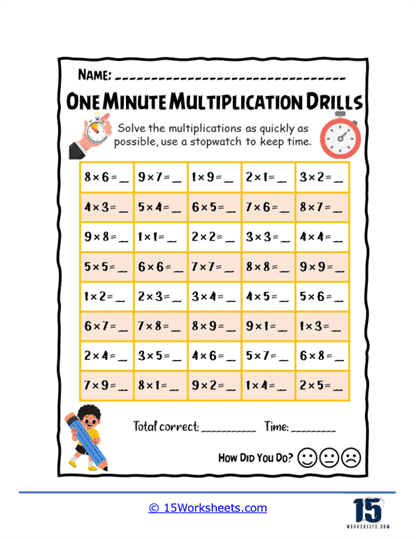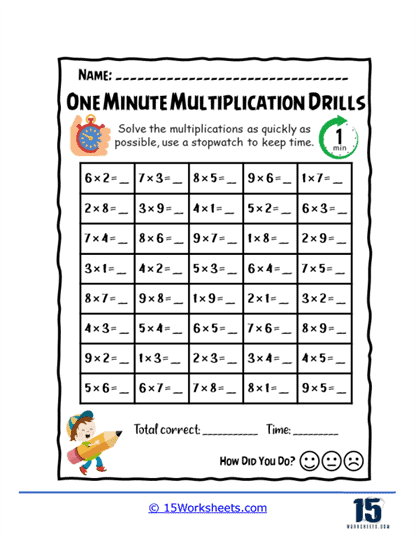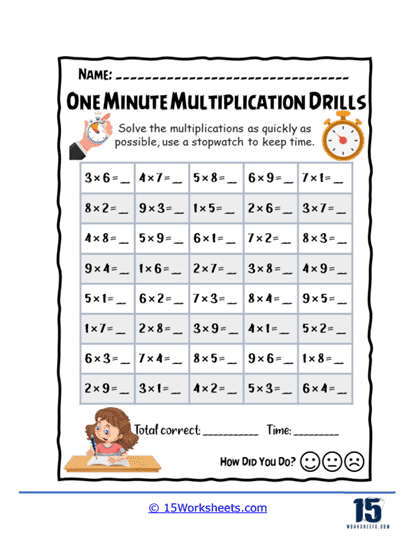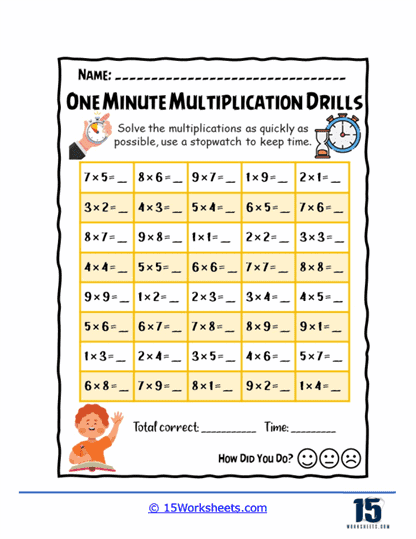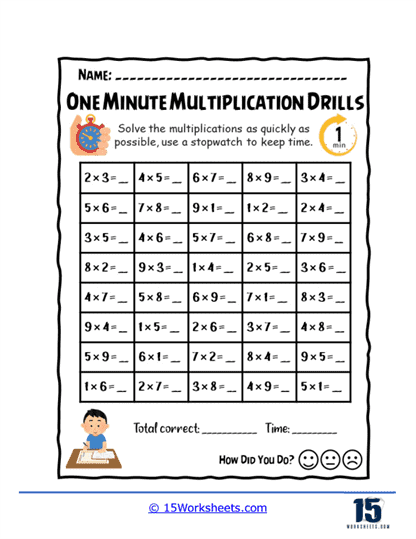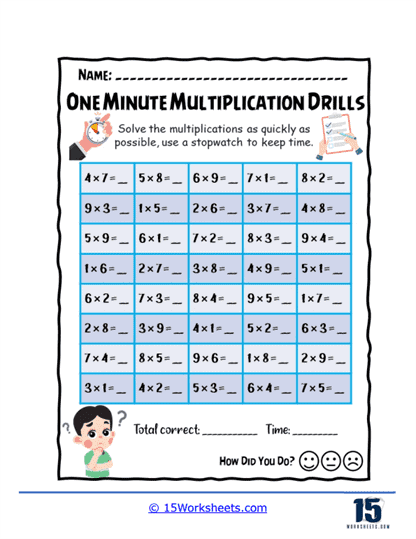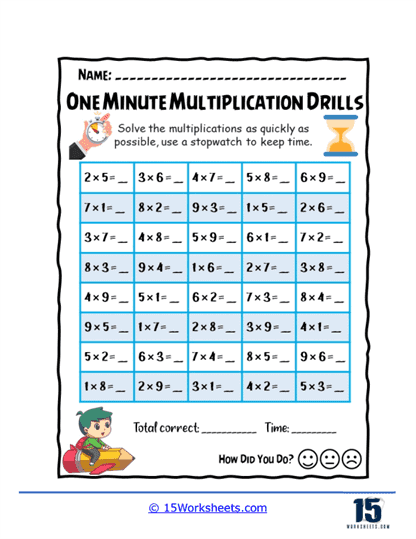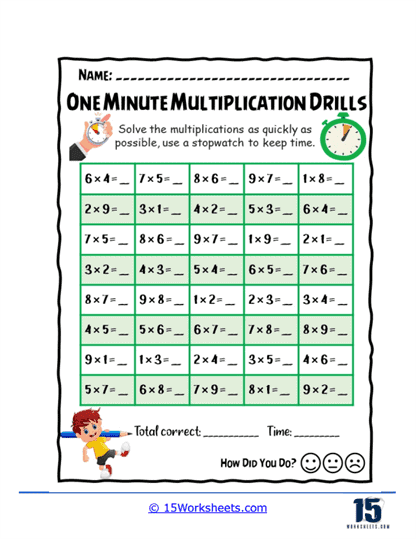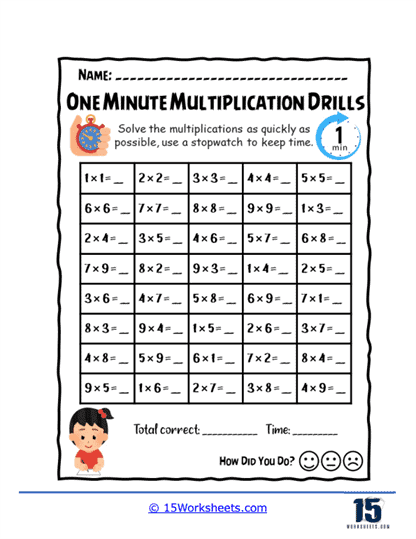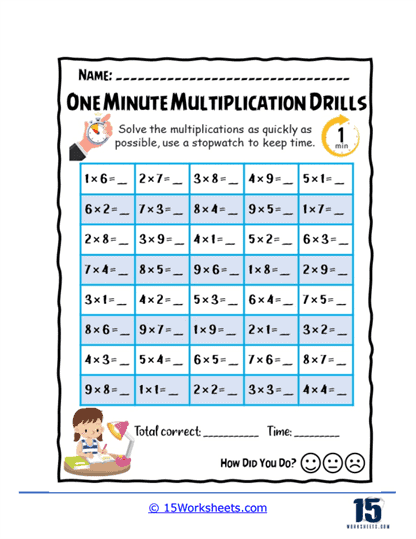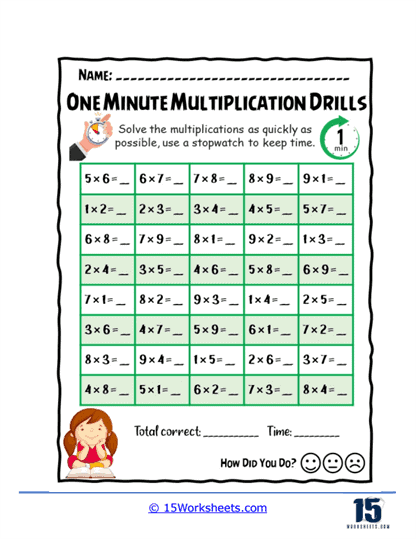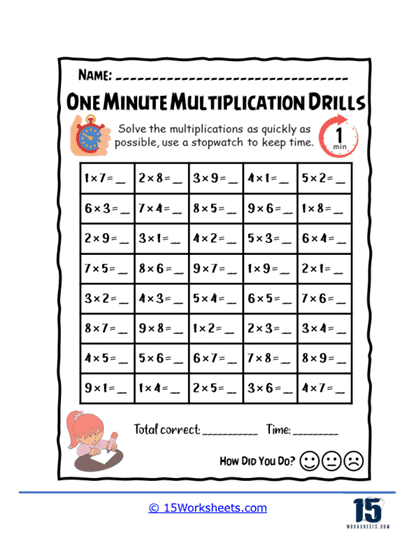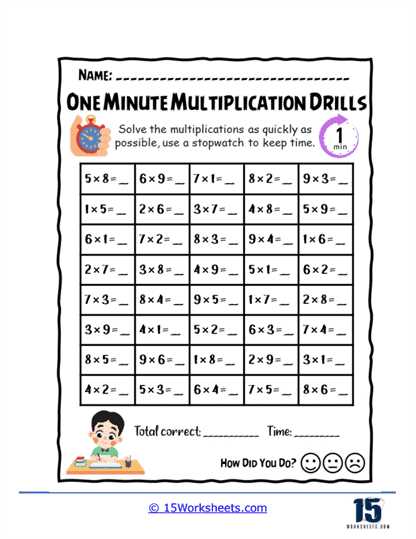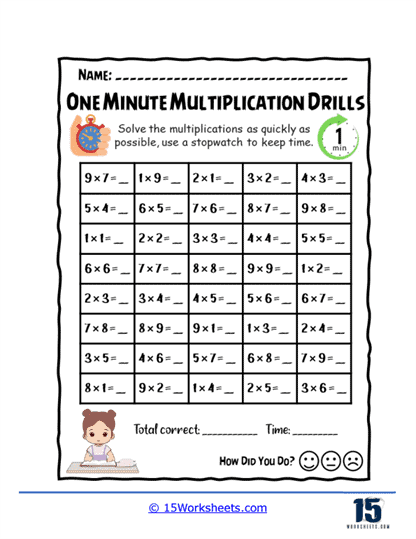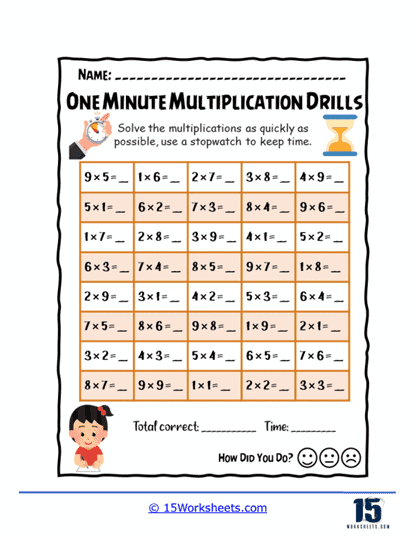Multiplication Minute Drills Worksheets
About These 15 Worksheets
These worksheets were created to help students improve their fluency and speed in solving multiplication problems. These worksheets are structured to provide students with a set amount of time, usually one minute, to complete as many multiplication problems as possible. The primary goal of these drills is to encourage students to master multiplication facts quickly and efficiently, which is crucial for building a solid foundation in math. These drills are often used in elementary classrooms to develop automaticity in multiplication, which allows students to handle more complex math problems, like multi-step equations and word problems, with greater ease.
One of the key features of these drills is their focus on repetition. The worksheets typically include a large number of problems that cover a wide range of multiplication facts, usually from 1 to 12. The idea behind this repetition is that the more a student practices these facts, the faster and more accurate they will become at recalling them. This automatic recall is important because it frees up cognitive resources for tackling more advanced math topics, like fractions, division, and algebra. For example, if a student can quickly calculate 8 x 7 without having to pause and think, they will have more mental bandwidth available for understanding word problems or performing long division.
The worksheets come in various formats, depending on the skill level of the students and the specific goals of the drill. One common format is the “traditional” drill, where students are presented with a grid of random multiplication problems. These problems might include basic facts like 2 x 3 and 5 x 6, as well as slightly more challenging ones like 9 x 8 and 7 x 12. In this format, students are asked to solve as many problems as they can within one minute. The aim is not only to complete the worksheet but to answer as many problems as accurately as possible. Teachers often track progress over time, encouraging students to improve both their speed and accuracy with each drill.
Our drill worksheets are timed challenges that increase in difficulty. For instance, a drill might start with single-digit multiplication problems (like 4 x 6 and 3 x 7) and then progress to more challenging problems, such as multi-digit multiplication (like 12 x 11 or 14 x 9). This progressive difficulty helps students build confidence as they work through easier problems, while also pushing them to stretch their abilities with more complex calculations. These drills can be an excellent way to challenge students who are ready for more advanced multiplication while still providing practice for those who need more time to master the basics.
Many worksheets provide space for students to write down how many problems they completed within the minute and how many they got correct. Teachers can use these results to monitor progress over time, noting improvements in both speed and accuracy. Some teachers might even use these drills as a form of friendly competition, encouraging students to beat their previous scores or set classroom records. This sense of competition, even when it’s just personal, can motivate students to push themselves and stay engaged in their learning.
In terms of the math skills taught and reinforced in the drills, the primary focus is on mastering multiplication facts. These drills help students develop a strong understanding of how multiplication works and how to quickly recall the products of basic multiplication problems. This mastery is crucial because it forms the basis for many other math concepts. Without a solid grasp of multiplication, students will struggle with division, fractions, decimals, and algebra. Multiplication is a building block for these more complex ideas, and the speed at which students can recall multiplication facts directly impacts their ability to handle higher-level math.
In addition to teaching multiplication, these drills also reinforce other important math skills. For example, students learn to recognize patterns in numbers as they practice their times tables. They start to see that 3 x 4 is the same as 4 x 3 (commutative property of multiplication) and that multiplying by 10 is simply a matter of adding a zero to the end of the other factor (10 x 5 = 50). These kinds of insights deepen students’ number sense and help them become more flexible thinkers when it comes to math.
Another key skill developed through Multiplication Minute Drills is the ability to work under pressure. Since students are asked to solve as many problems as they can in one minute, they learn how to manage their time and focus on completing tasks quickly and accurately. This skill is especially important when students encounter timed assessments, like standardized tests, where speed and accuracy are both critical for success. By practicing with timed drills, students become more comfortable working under time constraints, which can reduce test anxiety and improve performance.
Problem-solving skills also benefit from these drills. While the problems on these worksheets are straightforward, the process of solving them quickly encourages students to develop strategies for recalling facts efficiently. Some students might learn to group facts in their minds (for example, recognizing that 7 x 8 is the same as 7 x 7 plus 7), while others might develop shortcuts for solving specific types of problems. These problem-solving strategies help students not only with multiplication but with all areas of math where quick thinking and efficiency are needed.
In addition to building multiplication fluency, these drills also help develop concentration and focus. Since students are racing against the clock, they must concentrate on the task at hand and avoid distractions. This focus is a critical skill not only for math but for all academic subjects, as it teaches students how to stay on task and complete their work efficiently. The more students practice with timed drills, the better they become at focusing their attention and avoiding common distractions.

